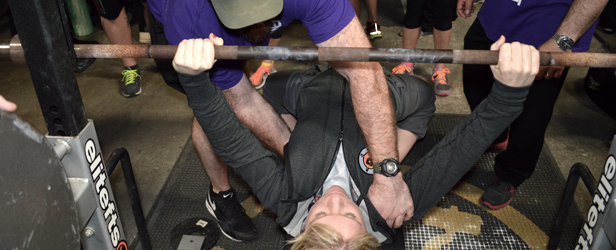
I have written a lot of programs over the years, and I am most well-known for what you would expect: strength. What many do not know is that I do a lot of other things, such as physique transformation (fat loss/muscle gain and general getting super-hot and jacked) and post-rehab training.
WTF is post-rehab training? I don’t know of a name for it, so I've developed my own system for the period of time when an injured individual has completed their rehab protocol but is not yet able to return to full-on training.
We see a ton of people at Total Performance Sports that come from doctors and physical therapists once they have completed their treatment with them. The medical pros want to send their patients somewhere that they know they will get a strength and conditioning program that is at the correct level for their patients and will keep them walking down Progress Alley with no detours to Oh-Shit-I-Just-Reinjured-Myself Street.
We do our best to make sure they get what they came for and get healthy and back to their respective sports and activities as soon as possible.
When elitefts asked for my annual submission to the Programs that Work ebooks (which I couldn't be more honored to do) I talked with Mark Watts and we both agreed on this rarely covered topic.
We get questions all the time on the Q&A about rehabbing injuries and one of the biggest ones is lower back trouble.
I have chosen the plan below, as it fits in with the needs of elitefts readers very well. It was designed for my good friend Eddie who is also a former boxing coach at TPS.
Eddie was diagnosed with several disc herniations in the lumbar region and they required extensive surgery with a long rehab process. His program picks up where PT left off and has been reviewed by his therapist, John Palloff, to ensure safety.
The program's purpose is to take someone who was once a stud athlete in superior shape who now needs a leash and a muzzle put on them to prevent them from doing anything stupid (like I would usually do with myself). It is a slow progression and has worked out very well to this point.
When Eddie underwent this program, he had a history of strength training, doing those stupid mud runs, and boxing. He was very strong prior to the injury and had a low level of body fat. I managed his training and nutrition during this process to make sure he was eating on par with his reduced level of activity in order to minimize body fat gain and maximize lean body mass retention.
We had several priorities in the program, and in no particular order they were to:
- Massively increase torso strength (I refuse to say core)
- Improve flexibility, especially in the hamstrings
- Return him to full activity/strength as soon as practical
- Keep him motivated and pain free
- Minimize body fat
- Return him to a level of conditioning on par with a fighter
I am including the first few months of the program. He had amazing results from this and is still following updated versions. It worked. If you have an injury similar to this and have recently had surgery, show it to your PT and see if it is appropriate for you.
Even if this program isn't the right one for you, you can still use it to develop ideas on how to recover from a catastrophic injury. There is always hope — there is always light at the end of the tunnel.
The hardest part is checking your ego at the door and starting off with baby steps.
Phase 1
Four Months Post Surgery
This was repeated for two cycles.
Contraindicated Exercises: Barbell Squats, Deadlifts, Olympic Weightlifting
Notes:
AMAP — As many as possible, one in the tank.
When a number is listed, that is your total for the workout. Do as many sets as it takes.
All days: 5-8 minute General warm-up of sled drag with belt at hips.
Phase 2
Once this was completed, we moved onto Phase 2.
Notes:
This was repeated for two more cycles.
All days: 5-8 minute General warm-up of sled drag with belt at hips.
Phase 3
This was also a success, and we went to Phase 3.
At this point in any post-rehab program, it isn't important to not be too aggressive. We are just now starting to see our ability for more work.
Big lifts are still a no-no, per PT.
Notes:
All days: 5-8 minute General warm-up of sled drag with belt at hips.
All days: Dynamic warm-up, eight reps of each exercise unless otherwise noted. Do two cycles through.
- Heel Walks, 100 feet
- Prisoner Squat
- Squat to Stand
- Jumping Jacks
- Seal Hops
- Cossack Squats
- Bird-dogs
- Inside Leg Raise
- Lying Leg Raise
- Breathing drills x 3 reps each
Phase 4
Eddie was now 6 months post op (not that kind) and we could begin to get a little more aggressive.
Squats/Deads were still contraindicated.
Notes:
The circuits at the end were finishers and consisted of low impact stuff he could do at his choice. We used a lot of battling ropes for this. Times are listed in an on/off form (e.g. 30/60=30 seconds on, 60 seconds rest between cycles).
All days: 5-8 minute General warm-up of sled drag with belt at hips.
Phase 5
Now is the time for real work.
Squats/Deads still not allowed per a higher authority than me.
Notes:
All days: 5-8 minute General warm-up of sled drag with belt at hips.
After completing all phases, Eddie is looking strong and prepared for full recovery. I hope this will help some of you with your post-rehab programming.
If you have any questions feel free to ask me on the Q&A.














